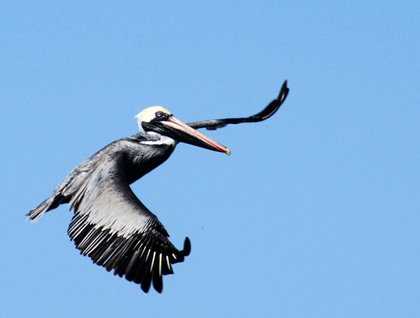We navigated to the opposite side of Puerto Ayora, where the island holds an interesting habitat for the yellow dragons of the Galápagos. We disembarked with a dry landing, and found the beginning of the path covered with young lava flows but the rest sandy and rocky. It’s amazing to think about the efforts of the national park service when considering how many introduced animals we would have once seen here that have now been eradicated, or at least reduced in their numbers. Still we saw plenty of iguanas on the path. These reptiles are endemic to six different islands in the Galápagos. The yellow dragons camouflaged easily amongst the dried shrubs, except for the younger ones which were a bit of a darker brown. We certainly learned a lot about the natural habitat of the land iguanas of the Galápagos here. It’s hard to believe reptiles can easily live up to sixty years.
For those of us who wanted to go for a swim after the hike, a nice time at a white sandy beach was offered. Some of our explorers wanted to explore the ocean world so instead they went deep water snorkeling. While snorkeling some sea lions were seen in the water, as well as some tropical fish species and a white-tipped reef shark.
During the afternoon we had a Zodiac ride along the coast of Santa Cruz and searched for birds on the coastline of Eden Islet (a satellite islet of Santa Cruz). Blue-footed boobies were seen, some on the rocks resting, while others were fishing. Brown pelicans, lava gulls, and Pacific green sea turtles were observed looking for shelter in the inlets of calm water surrounded by mangroves.
We pulled anchor and navigated around Daphne Major Islet, where we could enjoy a beautiful sunset. From the ship we could see the natural laboratory of Peter and Rosemary Grant, British scientists that study Darwin’s finches for several years on this islet. A good way to learn about their research is to read the book entitled “The Beak of the Finch,” written by Jonathan Wiener.







